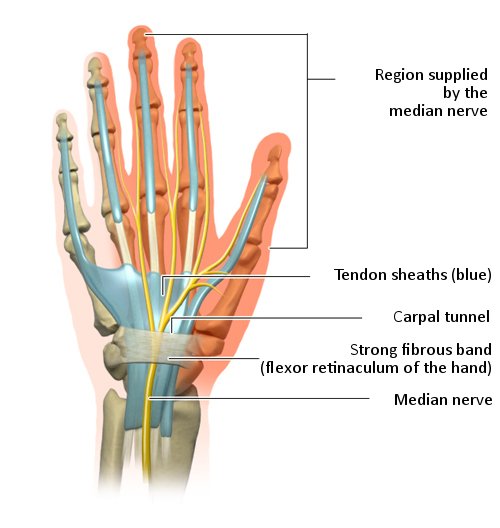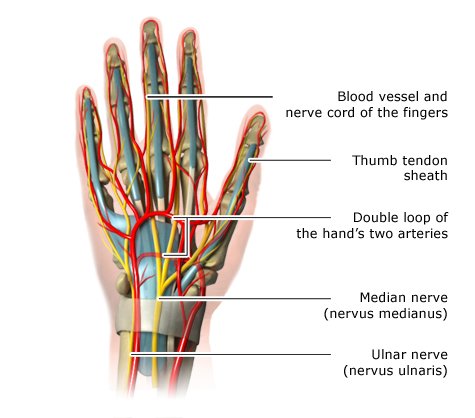Bones and joints
The human hand is made up of a total of 27 individual bones: 8 carpal bones (in the base of the hand), 5 metacarpal bones (in the middle part of the hand) and 14 phalanges (finger bones) are connected by joints and ligaments. About one quarter of all our body’s bones are found in our hands. The hand can be divided up into three different areas based on the joints:
- Carpus (wrist bones)
- Metacarpus
- Fingers
Wrist
The wrist is made up of two parts of a joint that work as one functional unit. It allows us to flex (bend) or extend (stretch) our hands. We can also tilt our hands sideways, towards our little finger or thumb.
Carpus
The eight carpal bones are held together tightly by ligaments, and are more or less fixed in place. They are positioned in two rows of four carpal bones each. Together with the radius bone in the forearm, two of the carpal bones (the scaphoid bone and the lunate bone) form the lower part of the wrist joint, which is very important for hand movements. The ulna bone in the forearm is separated from the carpal bones by a cartilage disc. The other part of the joint is located between the two rows of carpal bones.
Metacarpus
After the second row of carpal bones comes the metacarpus. This middle part of the hand consists of five long metacarpal bones. You can feel them quite clearly on the back of your hand. One of the carpal bones and the long thumb bone come together to form the basal joint of the thumb. Known as the carpometacarpal joint, it enables the thumb to be particularly flexible.
Fingers
The freely movable part of our hand is made up of five digits (four fingers and one thumb). Each finger has three individual bones, and the thumb only has two. The fingers have three joints each, which can only be bent and stretched in one direction. The thumb is the only digit that can twist, thanks to the saddle-shaped carpometacarpal joint.


